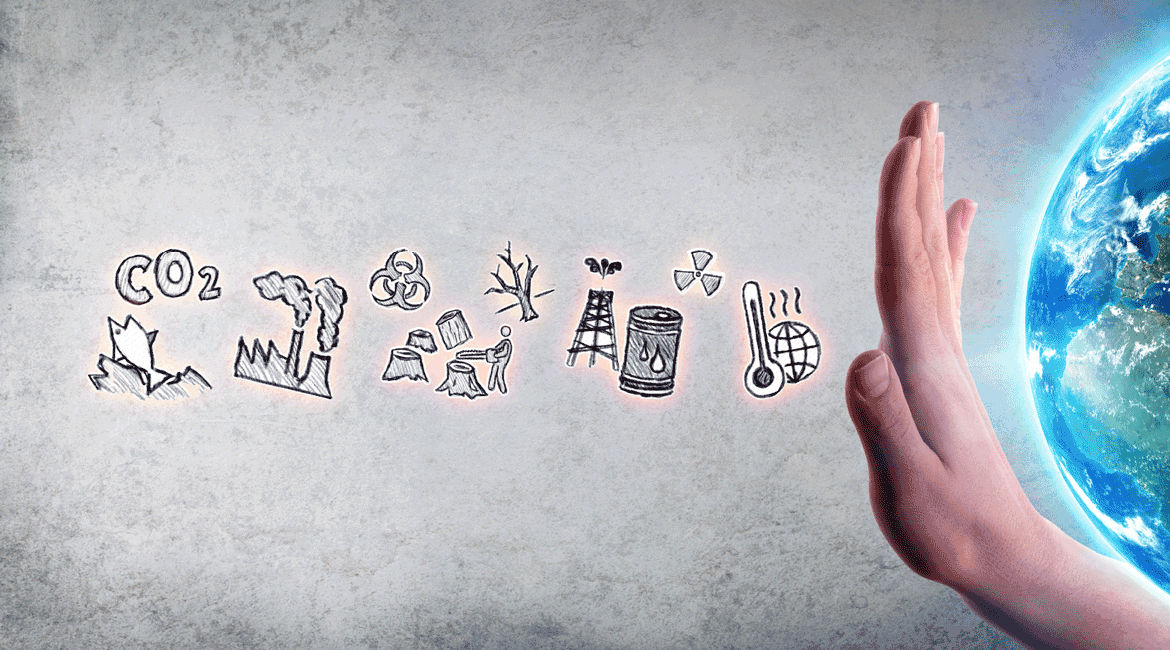New method for digital energy management
CO2 footprint for all products in real time

The successfully completed R&D project enables more precise product information on CO2 and creates the prerequisites for broad application in plants.
A new method makes it possible for the first time to determine a specific CO2 footprint for all manufactured products in real time. This is made possible by an extension for digitalized energy management that ÖKOTEC has developed together with Hydro Aluminium Rolled Products. It is particularly interesting for companies that have a major influence on the CO2 footprint of end products.
Three years ago, ÖKOTEC, co2online and the aluminum manufacturer Speira (formerly Hydro) jointly launched the CO2realtime project to take a close look at the production of the product film for packaging. This is because a CO2 footprint for products that takes into account all relevant supply and production processes places new demands on methodological and technical implementation: key figures, plants, processes, infrastructure and products must be systematically linked, made measurable and digitized.
More digitization – less CO2 and better operating result
Dr. Christoph Zschocke, managing partner of ÖKOTEC, sees this as a great opportunity:
Many companies are undergoing digital transformation. Energy efficiency and CO2 issues can be combined much more comprehensively with digitization measures in order to benefit from process improvements as well as the optimization of environmental effects, such as CO2 reduction and thus an improved operating result. Various studies make it clear that the positive effects increase significantly with a higher degree of digitization in companies.
(Cf. E.G. DIGITALIZATION INDEX FOR MEDIUM-SIZED COMPANIES, BITKOM, BDI & ROLAND BERGER STRATEGY CONSULTANTS)
The project objective was to develop a demonstrator that allows a partial product-specific carbon footprint (PCF) to be automatically generated from the digital energy management system, taking into account established standards (in particular DIN EN ISO 14040/14044:2006, 14064:2018, 14067:2018, Greenhouse Gas Protocol). The innovative approach is particularly aimed at companies that have a high relevance for the carbon footprint and the credibility of product claims for the end product. In this context, the quality and informative value of a PCF increases the more suppliers of the upstream products in the upstream chains create a PCF.
Even though many people are familiar with the creation of a carbon footprint for products or life cycle assessment and its advantages, widespread application in companies has so far failed to materialize. Reasons for this include the complexity due to a broad product mix or the lack of a data basis. In addition, a product-specific allocation of greenhouse gas emissions is highly demanding for manufacturing companies if different (sub-)products are to be manufactured in parallel in the plant or if intermediate products also take different process routes.
Answer queries about the carbon footprint more easily
Dr. Karsten Kober, Head of Energy Management at Hydro, emphasizes the importance of specific key figures:
In order to find approaches for optimization, product-specific key figures are indispensable. We need these to improve our manufacturing processes, to allocate costs according to the source, and for our external stakeholders. Inquiries concerning the CO2 balance of our products from the project can be answered precisely and transparently.
DR. KARSTEN KOBER, HEAD OF ENERGY MANAGEMENT AT HYDRO
With CO2realtime, evaluations, results and reports are based on real-time data with which those responsible can draw valid conclusions and initiate follow-up measures. The CO2 backpacks are automatically forwarded for each individual process step up to the end product. This transfer is mapped via the networking functionality of plants in the EnEffCo software system. Due to the modular structure of the plant networking, necessary adjustments can be parameterized easily and quickly.
Essential components for the project are the further developed key figure methodology by ÖKOTEC on behalf of the German Federal Ministry for the Environment (BMU) in combination with the software EnEffCo. With the key figure methodology, benefits and expenditures for plants are formed in order to determine an overall efficiency. The evaluation of the efforts is possible in the units primary energy, price or CO2 factor.
This means that a product-specific carbon footprint can be retrieved at any time with little effort and becomes an important by-product of a well-positioned energy management system. Those responsible for energy management, controlling or even the sustainability department have access to meaningful information that can be used in many ways.
KNUT GRABOWSKI, HEAD OF ENEFFCO® RESEARCH & DEVELOPMENT
The results of the CO2realtime project were presented at a digital final conference on June 10, 2020. Building on the project results, ÖKOTEC will now bring this extension of the EnEffCo software product to market maturity.
Project funded by the German Federal Foundation for the Environment “Real time carbon footprint for the manufacturing industry” / funding code: AZ33355.
Your contact
Image: Romolo Tavani/Shutterstock.com



